Search
Top » Bands and Artists » K » Kansas » Timeline
Timeline:
1970: Kansas I
Singer Greg Allen leaves the band only two weeks after it's formation because of differences about who the lead singer would be.
1970: Kansas I
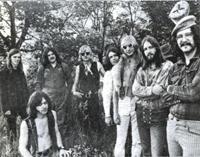
The first Kansas band is formed when Phil Ehart of White Clover and Kerry Livgren of Saratoga decide to form a new band. This new band consists of members drawn from both Saratoga and White Clover. The first Kansas band featured Phil Ehart on drums, Kerry Livgren on guitar, Larry Baker on guitar and saxophone, Don Montre on keyboards and flute, Dan Wright on keyboards and guitar, Dave Hope on bass, and Lynn Meredith and Greg Allen singing lead vocals.
1971: Kansas II

Despite a loyal following, the first Kansas band breaks up due to financial problems and musical differences. This leads to the formation of the second Kansas band. This band features Kansas I members Kerry Livgren on guitar, Dan Wright on keyboards, Don Montre on keyboards, saxophone and flute, and Lynn Meredith singing lead vocals. Zeke Low from Livgren's former band Saratoga is brought in to play drums. Also joining Kansas II is bassist Rod Mikinski and saxophonist and flutist John Bolton.
1973: Kansas (Kansas III)
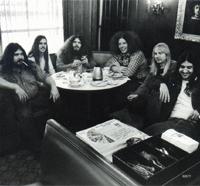
After overtures from Phil Ehart of the reformed White Clover to join the band, Kerry Livgren decides to join White Clover. After indications that the band was about to receive attention from music legend Don Kirshner, the band decides to change the name of their band to the less psychedelic name of Kansas. This is the classic Kansas band that consists of Phil Ehart on drums, Kerry Livgren on guitar and keyboards, Steve Walsh on keyboards and lead vocals, Richard Williams on guitar, Robby Steinhardt on violin and lead vocals, and Dave Hope on bass.
1974: Kansas releases first album

Kansas releases the self-titled album Kansas. The song Can I Tell You is released as a single. This album would eventually climb to #174 on the charts, and would go gold on 9/12/95.
1975: Masque
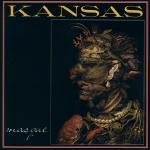
Masque was to be the third album for Kansas. This album showed the musical maturity that the band had achieved, and that they were ready to take the next step that would bring them their greatest fame. Masque made it to #70, and included the single It Takes A Woman's Love. It achieved gold status on 12/16/77.
1975: Song For America.

Song For America would be the second album for Kansas. It climbed the charts to #57 thanks in part to the single Song For America. It went gold on 6/20/80. This album also featured the longest song they ever recorded. Incomudro-Hymn To The Atman clocked in at over twelve minutes long.
1976: Leftoverture

With the release of Leftoverture, Kansas would become a major band. Thanks to the single Carry On Wayward Son, which climbed to #11 on the charts, Leftoverture became a major hit. It rose to #5 on the charts and would go gold on 01/25/77. It took less than two months before it went platinum on 03/15/77.
1977: Point Of Know Return
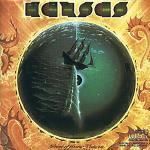
Point Of Know Return came out in 1977 and became their biggest hit. With the the gold single Dust In The Wind rising to #6 and the title track single going to #28, this album made it all the way to #4. With Point Of Know Return going gold on 10/11/77, and then achieving platinum status on 11/29/77, Kansas proved that they were not a one hit wonder and were now one of the biggest bands in the world.
1978: Two For The Show
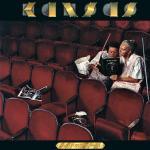
Thanks to the success of their two previous albums, Kansas was now playing major venues. It was decided to release an album containing some of these performances. Two For The Show came out in 1978 and quickly went gold on 11/16/78 and platinum on 03/14/79. In also climbed to #32 on the charts. This was a considerable accomplishment since it was an album that contained no new music. The single Lonely Wind made it #60.
1979: Monolith
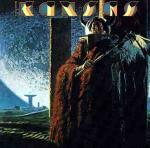
With singles People Of The South Wind and Reason To Be climbing to #23 and #52 respectively, Monolith would be the third studio album in a row for Kansas to break into the top 10 at #10. It reached gold status on 06/18/79.
1980: Audio-Visions

1980 would see the release of the last album from the original six members of Kansas. It would be another two decades before the original members would record an album together again. Audio-Visions reached #26, and the single Hold On hit #40 while Got To Rock On made it to #76. Audio-Visions gained gold status on 1980.
1982: Vinyl Confessions features a new Kansas member.
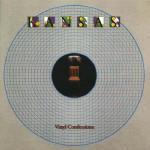
Vinyl Confessions saw a new line-up in the band. Lead singer Steve Walsh left the band during the making of this album over differences with the direction that the band was taking. Taking his place was keyboardist and lead singer John Elefante. Even without the services of one of the greatest voices in rock to lead the way, Vinyl Confessions climbed up the charts to #16. The single Right Away made it to #41, while Play The Game Tonight hit #17. Vinyl Confessions was to be their last album to date to break the top 20.
1983: Drastic Measures
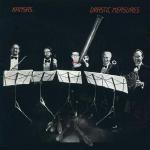
Drastic Measures would see the departure of another key member of Kansas. Violinist Robby Steinhardt was no longer a featured part of the music and so he decided to leave the band. It would be the last album before Kansas disbanded. Drastic Measures did not manage to achieve the popularity of previous Kansas albums, although the single Fight Fire With Fire did manage to hit #58 on the charts. It was the beginning of the MTV era and Kansas no longer seemed to fit with the musical times.
1984: The Best Of Kansas
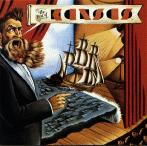
A best of Kansas album is released. It went platinum on 10/25/90. This is the last Kansas album to date to achieve platinum status. It would be re-released in 1999 with additional tracks. It's highest chart position was #154.
1986: Kansas reforms and releases a new album

After the disbanding of Steve Walsh's band Streets, he joins with Kansas drummer Phil Ehart and guitarist Richard Williams to reform Kansas. Bassist Billy Greer from Streets and guitar virtuoso Steve Morse also join to round out the new itertion of Kansas.
Their first album is called Power. With a less progressive feel, this album would be a more rock/pop album. It would also take advantage of the music video medium. Thanks in part to the music video for All I Wanted, this single would reach #19 while the album would make it to #35. The title track single Power got as high as #84. No other Kansas album that came out after Power, would be as successful.
1988: In The Spirit Of Things
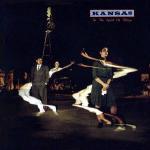
The next Kansas album In The Spirit Of Things, came out in 1988. Despite several good songs, this album would not achieve the success that past Kansas albums had. While Kansas maintains a fiercely loyal and substantial fan base, and still has influence on newer progressive bands, it became clear with In The Spirit Of Things that Kansas was no longer a major player in rock music. It would also be the last album that featured Steve Morse. He would leave the band before the production of the next album. In The Spirit Of Things highest chart position was #114.
1992: New Kansas line-up and a live album

A new Kansas line-up delivered a live album entitled Live At The Whisky. New band members include David Ragsdale on violin and guitar, and Greg Robert on keyboards. This album was recorded at the Whisky a Go Go in L.A. and would also be released on VHS video. Like all other Kansas line-ups, this Kansas band would tour almost constantly.
1995: Freaks Of Nature

After seven years Kansas releases an album of new material. Freaks Of Nature would be the only studio album featuring the Whisky line-up. More of a straight ahead rock album than previous offerings, it showed that the band was still a viable creative band that could not be pigeonholed. Unfortunately it failed to make the charts, and David Ragsdale and Greg Robert would leave the band before the next album to pursue other interests.
July 28th, 1996: Kansas is inducted into the Hollywood RockWalk
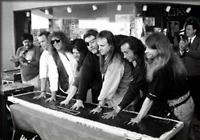
Kansas is inducted into the Hollywood RockWalk in Los Angeles, California. While Kansas still awaits the call from the Rock and Roll Hall of Fame (much to the consternation of their fans), this induction is possibly a more important indication of their status in the music establishment, as this honor is based on influence and not popularity.
1997: Robby Steinhardt returns

To the joy of Kansas fans, Robby Steinhardt returns to Kansas to play the violin and sing lead and backing vocals after not being a part of the band for some fifteen years. After a short stint with the band Steinhardt-Moon in the mid nineties, Robby joined Kansas on tour, and has been with the band ever since.
1998: Always Never The Same
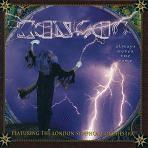
Kansas releases Always Never The Same. An album featuring symphonic adaptations of their classic hits and other tracks, this album would bring their music into the symnphonic realm thanks to the presence of the London Symphony Orchestra and Conductor Larry Baird. A well received album, it also featured the return of Robby Steinhardt as a recording member of Kansas.
2000: Somewhere To Elsewhere
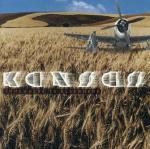
With the release of Somewhere To Elsewhere, fans would once again get to hear the symphonic type of music that Kansas was famous for, as well as some good rock tunes. The first album featuring all-new music since 1995, it was written entirely by former Kansas member and co-founder Kerry Livgren. Recorded in Livgren's studio, it also featured Livgren as a performer, as well as former Kansas bassist Dave Hope.
2004: "Sail On, The 30th Anniversary Collection" Released

A collection of songs that also includes many video performances from the band over the years is released in conjunction with the 30th anniversary of Kansas.
More Information...
March, 2006: Robby Steinhardt is replaced by David Ragsdale
Ahead of an upcoming album, and shortly before the 2006 tour kicks off, Kansas decides to go in a different musical direction and replaces original member Robby Steinhardt with former member David Ragsdale.
This category needs an editor